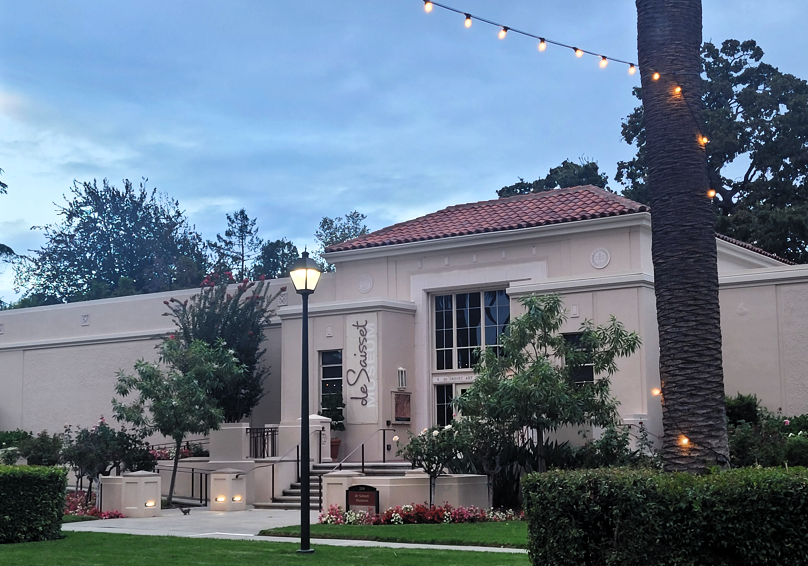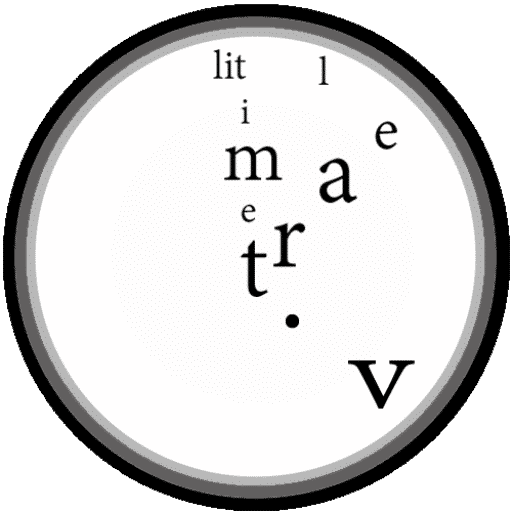
Previously in my post on Mission Santa Clara, I had briefly mentioned the de Saisset Museum. I made a trip to the Museum to look at the fourth bell of the Mission displayed inside, only to find that it was closed during the summer. So, I ventured again this fall.
Here’s everything I saw at Santa Clara University’s de Saisset Museum, including the Mission bell!

de Saisset Museum
It just happened to rain that morning but that didn’t stop me from getting to the de Saisset Museum again. Actually, it was nice to revisit the lovely SCU campus on a rainy day for a change.
There must have been an event recently, because the campus was prettier than usual with string lights here and there:


When I got to the campus museum, it was open but nobody else was there. I think it’s because I visited on a weekday at 10 AM.

FYI, admission is free! As for the hours, they vary depending on what time of the year you visit, so be sure to check their website: https://www.scu.edu/desaisset/about/visit/hours/
Inside de Saisset
Once I entered the museum, I found myself standing in an empty yet aesthetically arranged space with minty walls:

To the left was some auditorium (for events, maybe?) and to the right was an exhibit being prepared, I thought. It seemed to be about Mission Santa Clara and the other Spanish missions in California, with their photographs, drawings, and blueprints on the walls:



Turns out it was actually an exhibit currently on view! Called Californiana, this exhibit by a Puerto-Rican interdisciplinary artist named Monica Rodriguez is a “site-specific contemporary installation focused on the period of missionization (1769 – 1833) in present-day California, exploring the enduring impact of this history, which continues to exert its influence on the people, land, and culture of California” (Santa Clara University).

I didn’t realize when I was there, but the plants on display are all native to California. And they are in 21 bell-shaped pots made of adobe, with “their placement approximat[ing] the location of missions on a typical regional map” (Santa Clara University):


It’s such an aesthetic, meaningful exhibit combining historical records and artifacts with contemporary art featuring materials like plants and adobe. Brilliant! 👏👏👏



California Stories from Thámien to Santa Clara
Now, the exhibit I came for was the permanent exhibit called, California Stories from Thámien to Santa Clara. Ongoing since January 2020, this is the exhibit that features the fourth bell of Mission Santa Clara. It’s located downstairs, as indicated by this nice feather wall art:

I had planned to take a quick look at the fourth Mission bell and leave; I did not expect the permanent exhibit to be a flood of great historical artifacts and info!


The exhibit was a series of rooms filled with historical artifacts, records, and explanatory notes. The way everything was presented, with the glass displays, annotations, wall arts and replicas, was superb! Here’s what I mean:
Beginning with the Ohlone Native Americans, the exhibit covered the entirety of Mission Santa Clara’s history, including the Missions Era, Secularization Period, Rancho Era, Gold Rush, and the founding of Santa Clara University.



The Mission Bell

The fourth bell of Mission Santa Clara was displayed in the “Alta California Missions” section. It was so neat to look at a mission bell so up close:

There were inscriptions on the bell, which I think translate to something along the lines of: “Gifted by the King of Spain Alfonso XIII to Santa Clara.” To read more about the mission bells, check out this post on Facebook, with texts and old photos from the Santa Clara University Library: https://www.facebook.com/groups/1397504040464877/posts/2200012950213978/
Along with the mission bell, other items from the Missions Era were displayed, too:


Of the many religious artifacts, I have to say the ones that thrilled me the most were the ones associated with Magín Catalá. (He was the Spanish Franciscan missionary who truly lived as a servant of Christ, serving and loving those around him at Mission Santa Clara. To learn more, check out my blog post on the Mission HERE.)


I really appreciated how organized the display was, with each item and annotation numbered. Plus, this map of the different sites of Mission Santa Clara was really nice to view, too:

Interactive Commemorative Wall
Aside from the flood of great historical artifacts and information (all organized so well!), what amazed me was the interactive commemorative wall at the exhibit’s exit.
It was such a meaningful, thoughtful gesture honoring the Native Americans who had built and lived in the Mission, whose stories aren’t told as widely as the Spanish explorers and missionaries.
Seeing the different names of the actual Native Americans and reading about some of them really brought their stories to life. They weren’t just “Native Americans” or the “neophyte population”: they were actual individuals who came before us, with families, aspirations, and unique stories.
You can also press different buttons on the screen to learn about the various jobs Native Americans had at the Mission, the Mission’s relationship with other missions (e.g. Mission San José), and more.
I have nothing but applause for the California Stories from Thámien to Santa Clara exhibit. From start to finish, it was a literal journey through history!

Conclusion

The de Saisset Museum is a must-see for those visiting Mission Santa Clara. With all its historical artifacts, records, paintings and displays, it’s a true treasure trove for historians. The perfect complement to a self-guided tour of the Mission, it’s a cherry on top for those who want to learn more about the stories of its inhabitants through the ages.

P.S. Opening its doors in 1955, the de Saisset Museum is named after Ernest de Saisset, son of one of the richest families in San Jose back in the mid to late 19th century. He was also a student at SCU, called Santa Clara College back then, and an aspiring artist who sadly passed away when he was only 35. His younger sister, Isabel, left a bequest that led to the de Saisset Museum.

Right: Ernest de Saisset (1864-1899), self-portrait c. late 19th century.
P.P.S. Lastly but not least, here are more aesthetic photos!






